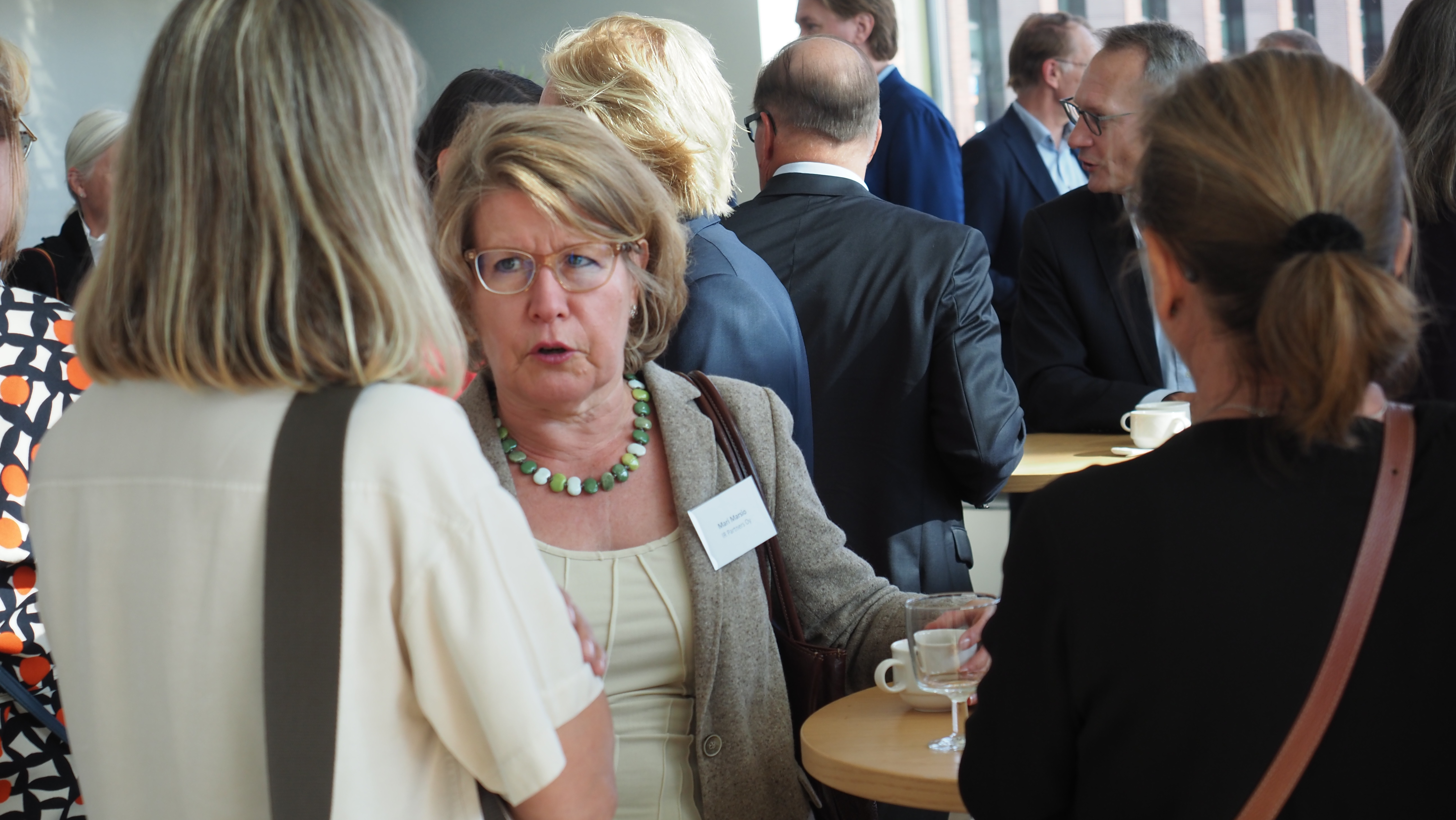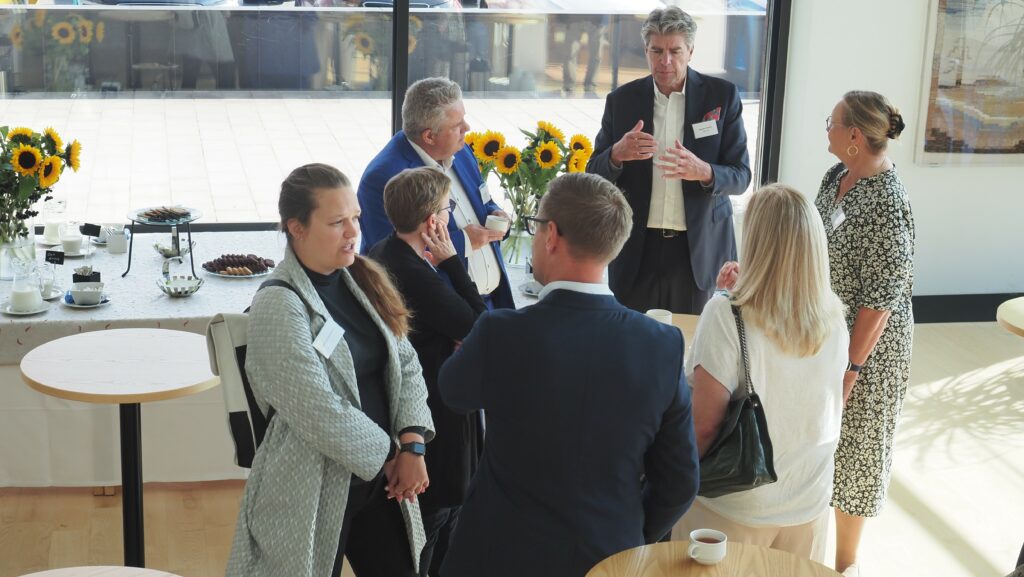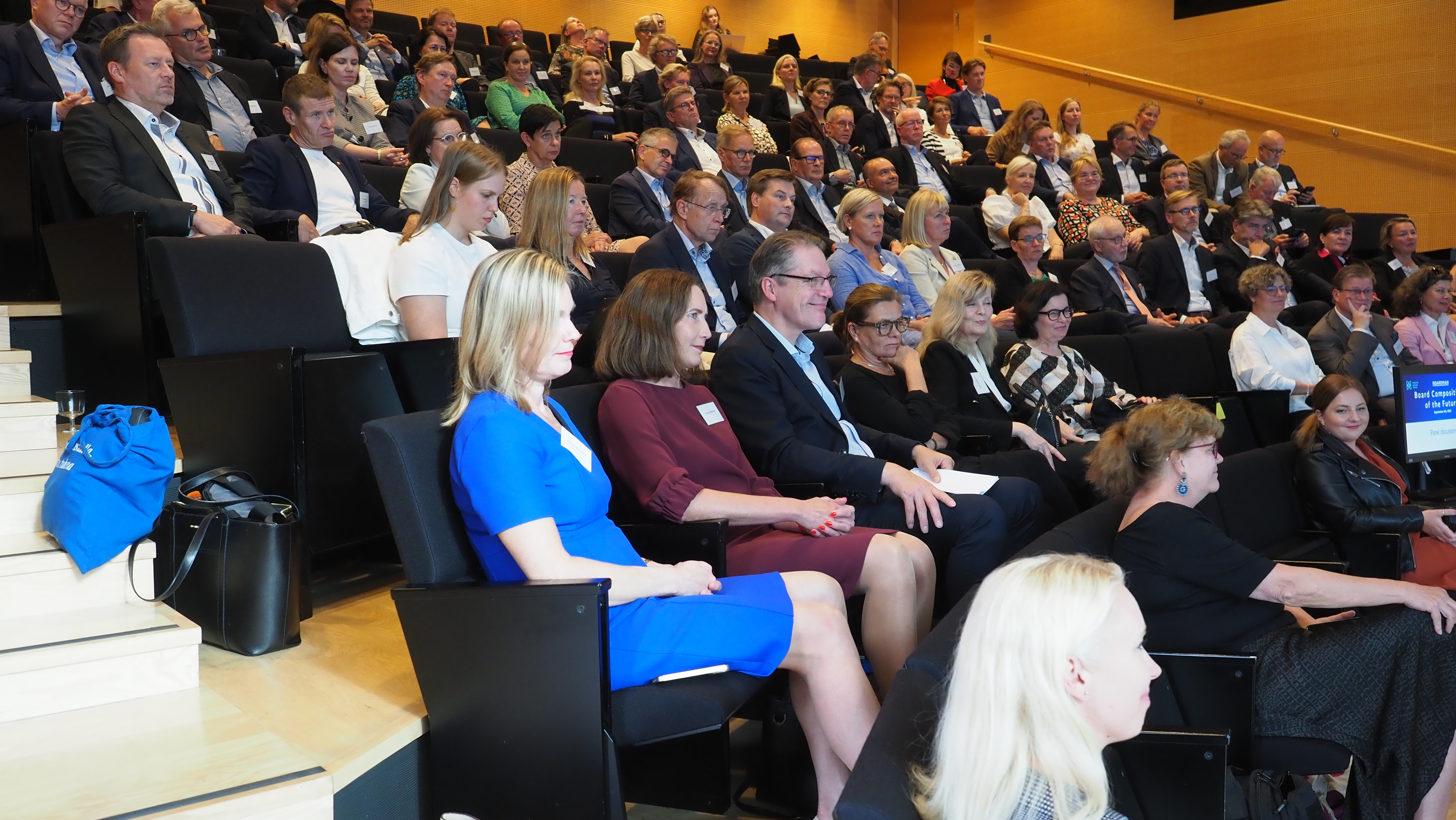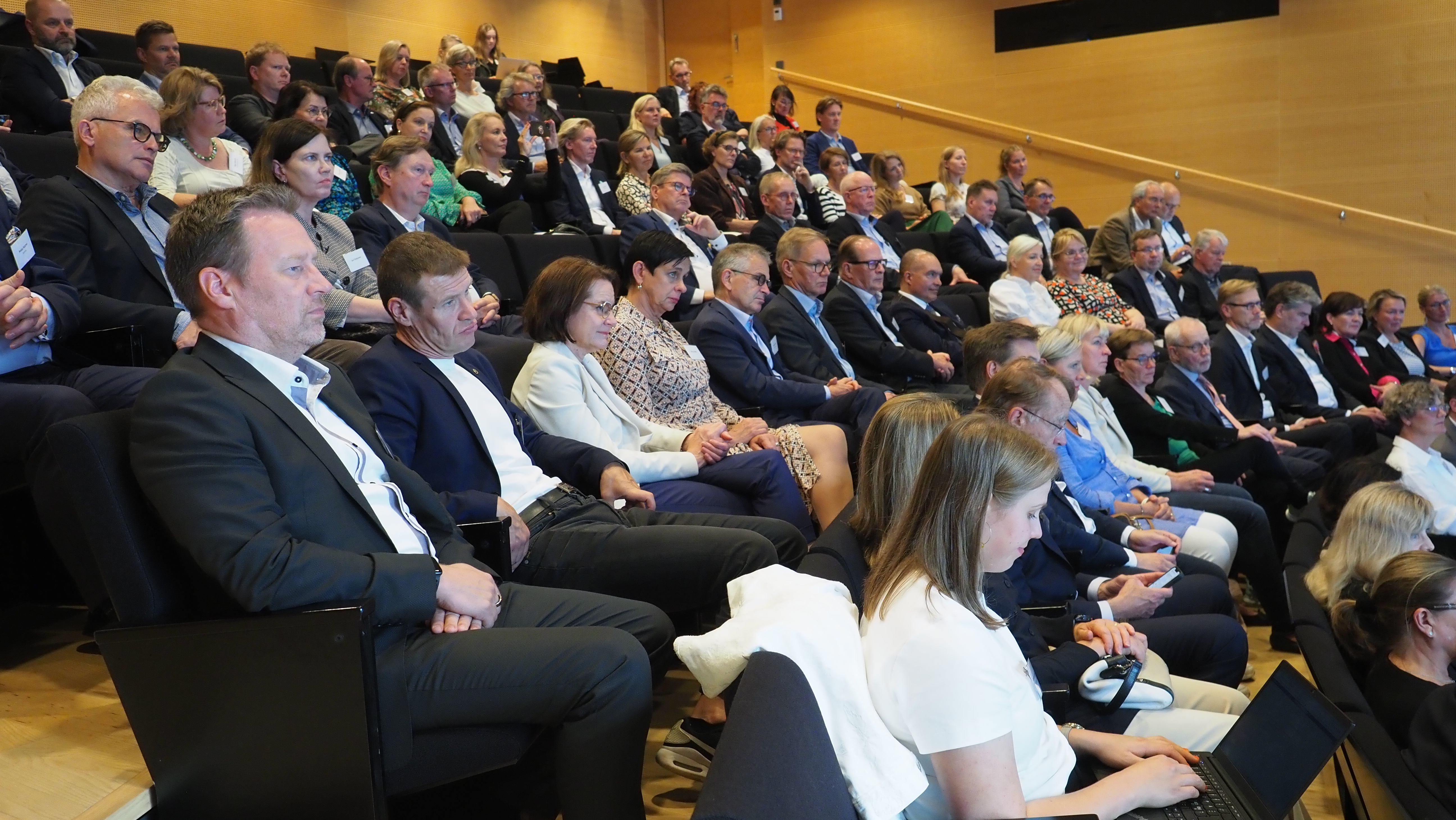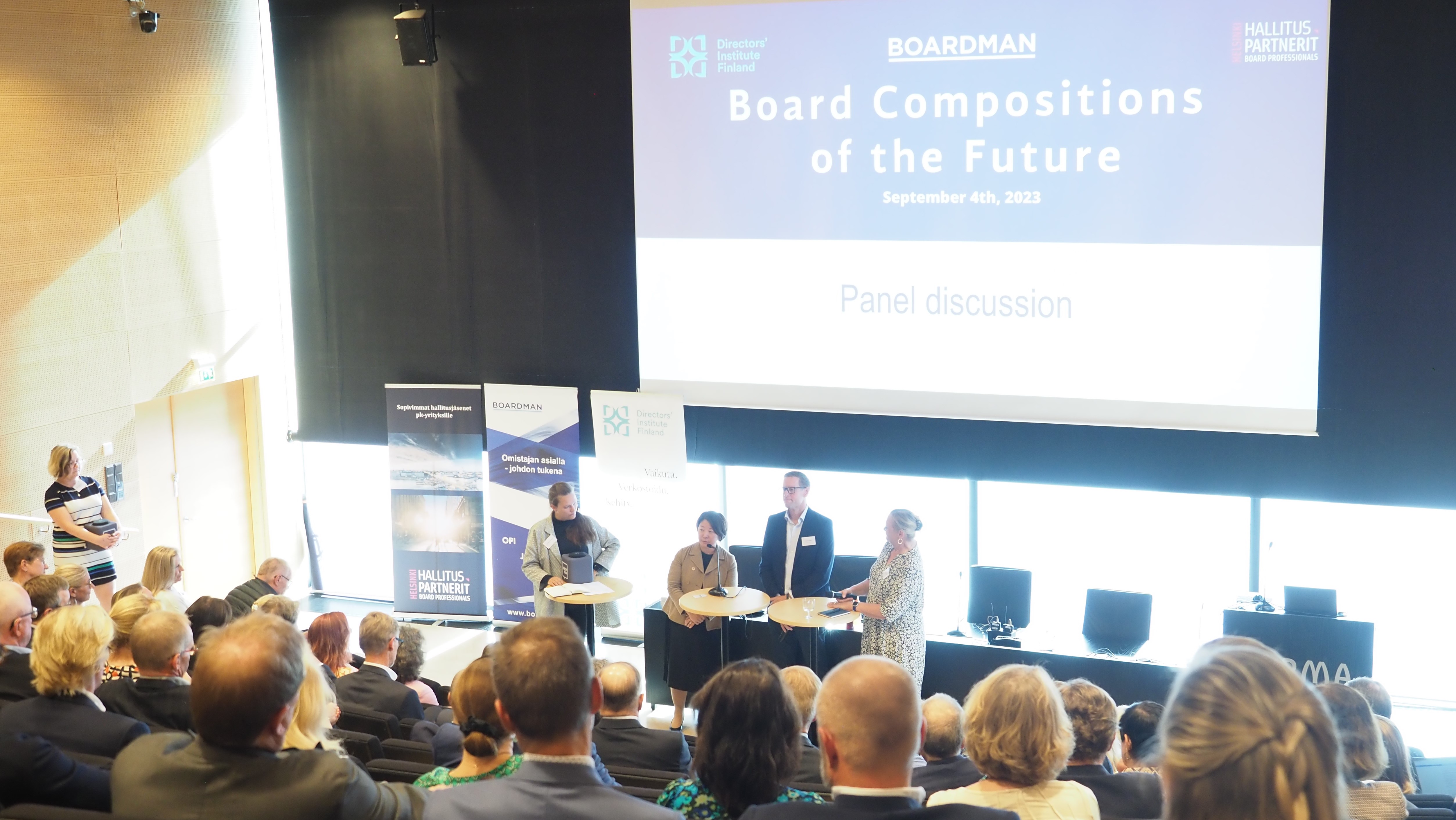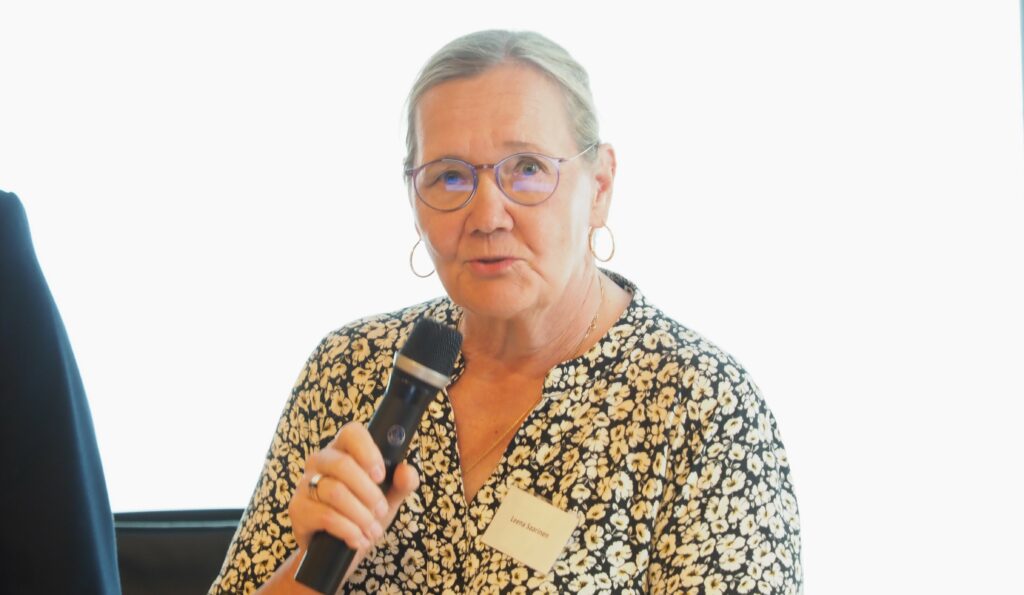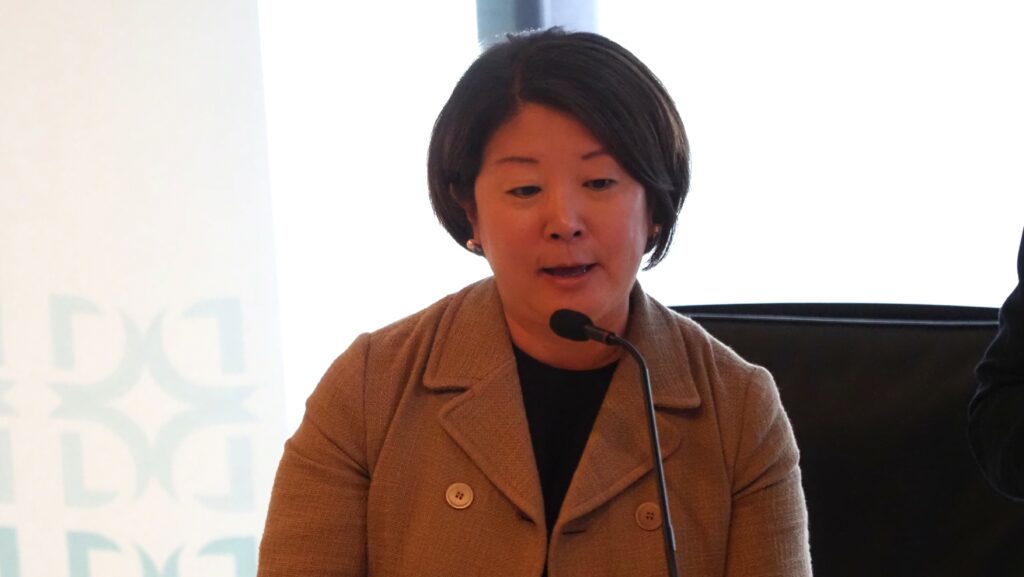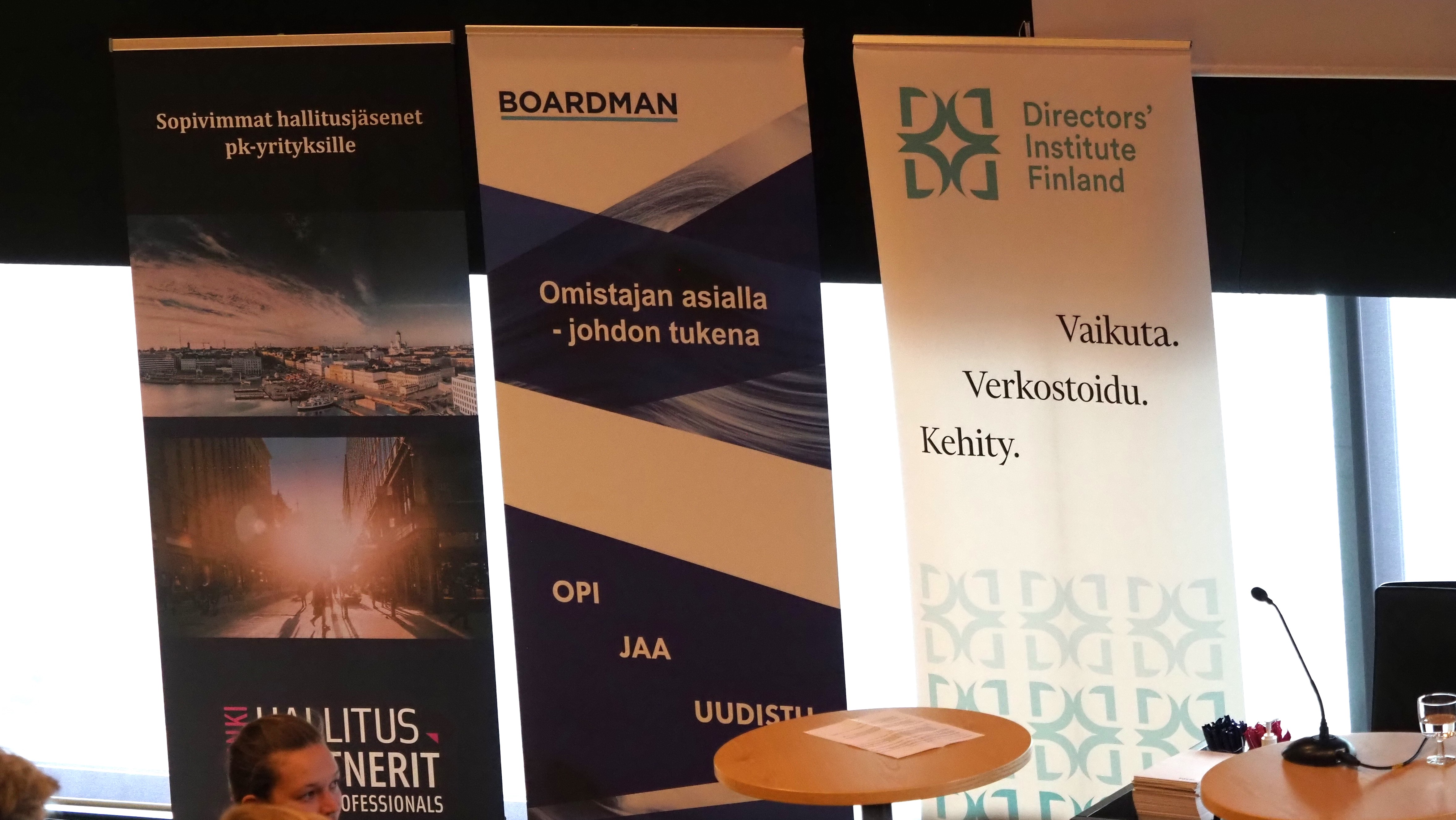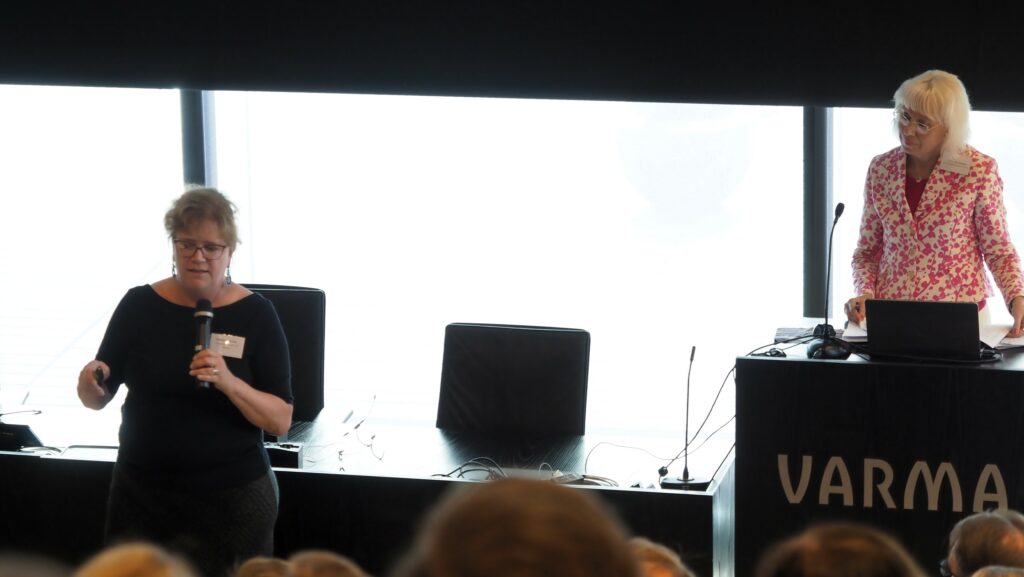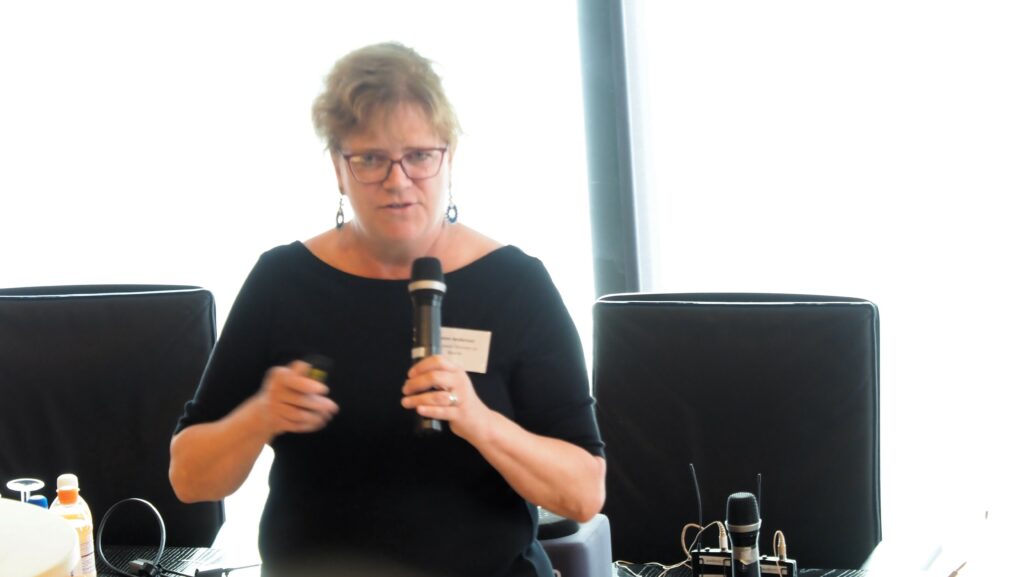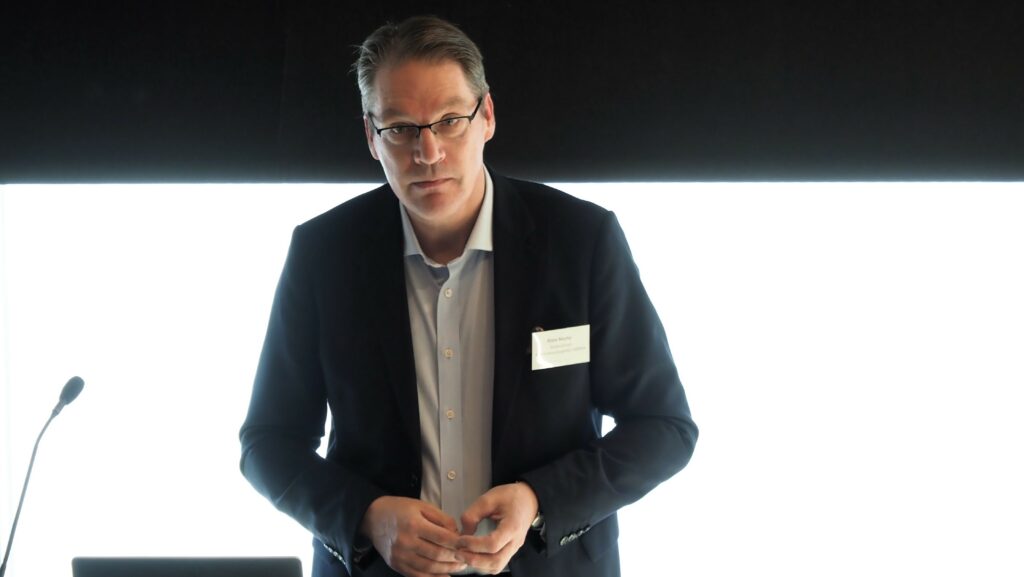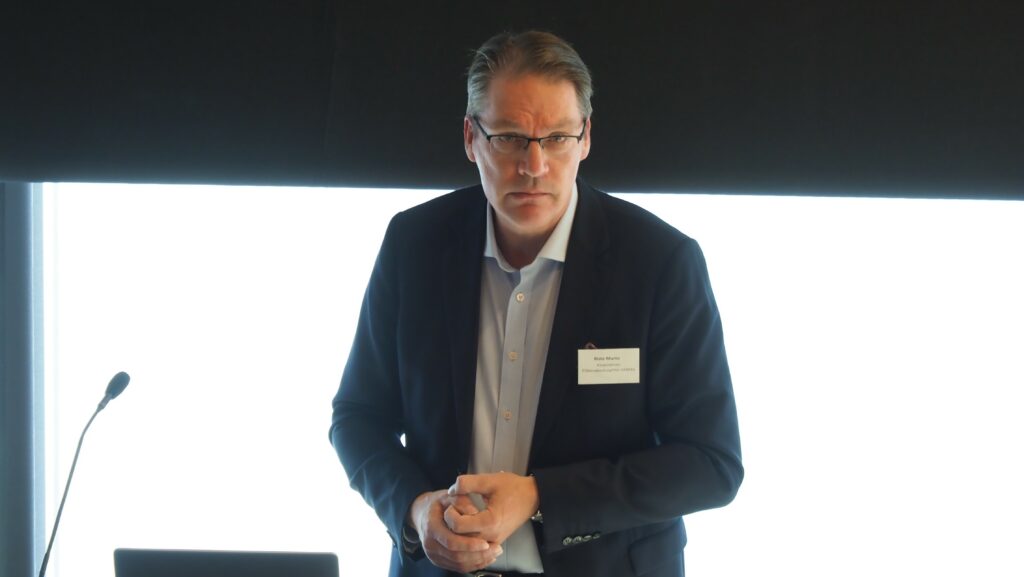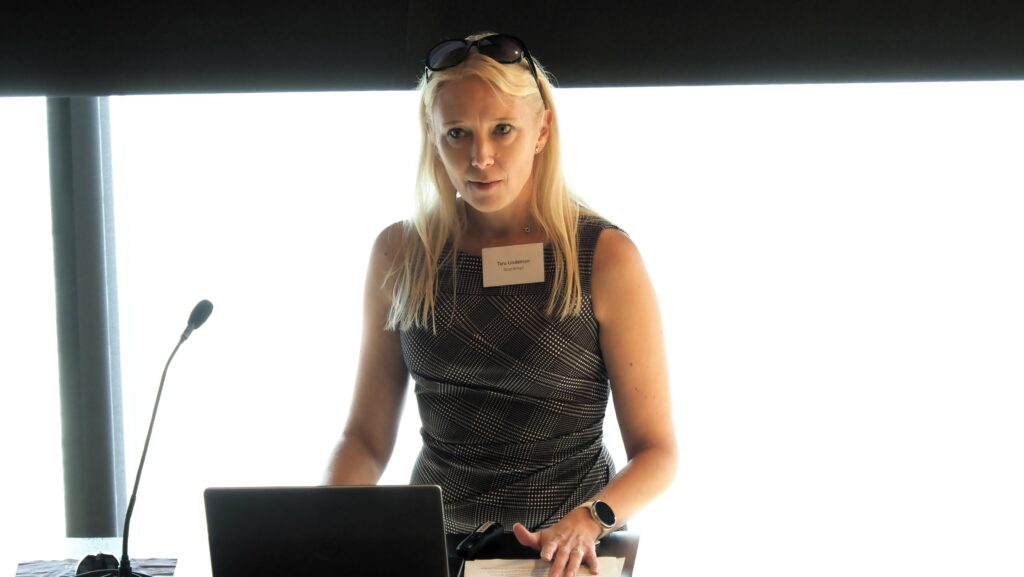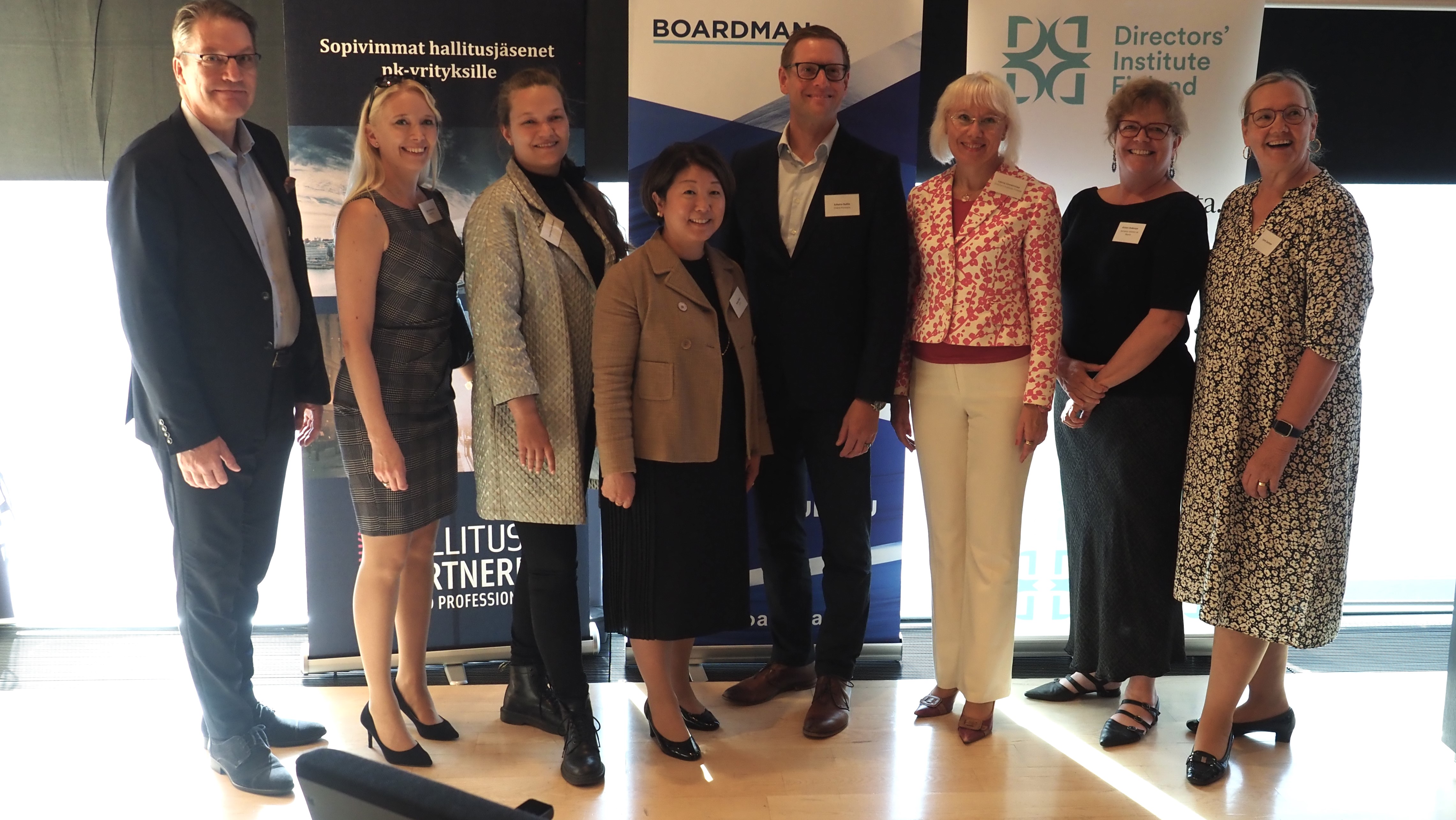DIF x Boardman x Board Professionals Helsinki event was organized on September 4 at Varma’s head office. The opening words were given by Taru Lindeman (Managing Director, Boardman). Risto Murto (President and CEO, Varma) presented the investors’ perspective, and Kristen Anderson (European Woman on Boards) discussed with Leena Linnainmaa (Secretary General, DIF) about diversity in Europe and content of the new directive. The panel discussion was facilitated by Josefiina Kotilainen (CEO, Startup Foundation). The panelists included Susan Repo (CFO, ICEYE), Leena Saarinen (Board Chair, Board Professionals Helsinki), and Juhana Kallio (Managing Director, Intera Partners).
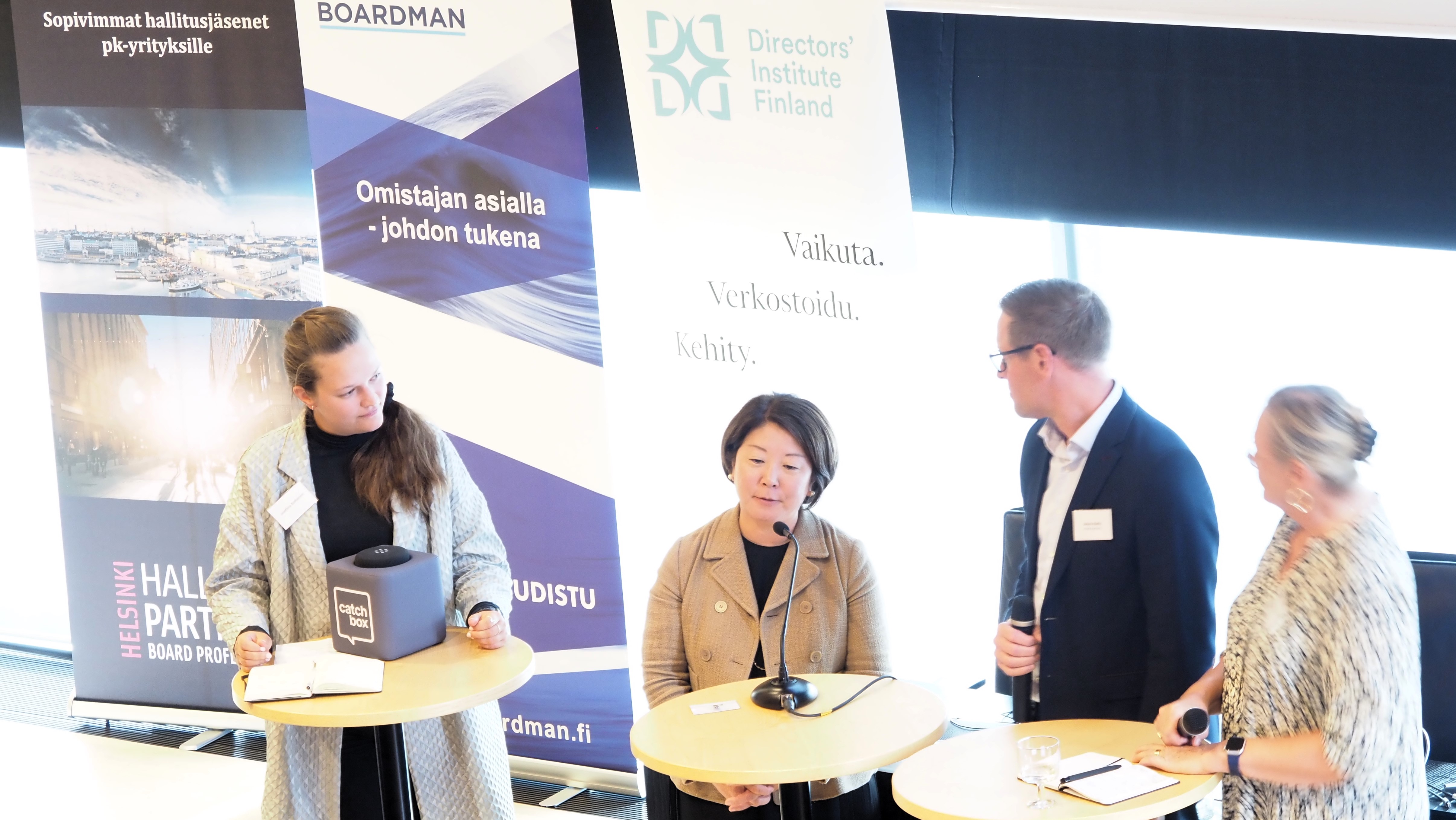
Are we ready for tomorrow’s board compositions?
Murto talked about future board compositions from the investor’s perspective. He started from gender by saying that ’rather good job done’ by upcoming regulation. Internationalization of companies has increased step by step – more and more international members are on boards. However, there are practical reasons why international board members are from Nordic countries and the UK. The number of US members, however, is rising. Boards tend to go for members who have been, for example, in Asia or the US, know the market and know Nordic corporate governance.
There are specific competencies needed for boards. At least two members have to have industry knowledge.
Also, understanding numbers is crucial.
For example, Shell has a board diversity of 50-50 regarding gender. Tenure is less than three years within 60 percent of the members. The board includes many nationalities, such as British, Dutch, American, Singaporean, and German, and persons with no executive industry experience. This is the direction we are going.
Change has happened gender-wise. In 2007, 50 percent of Nasdaq Helsinki firms had only males on board. Now, only a couple of small companies have an all-male board. In 2023, shares of women on the boards are the following: large-cap 37 percent, mid-cap 33 percent, and small-cap 28 percent. Shares of international board members in large companies are Nordea 80 percent, Nokia 70, Stora Enso 60, Kone, UPM, Metso, Sampo and Fortum 40, Neste 30, and Elisa 20.
The board is a team.
It always helps if there is someone who looks from a different angle. Thus, hurry up with gender diversity, small-caps!

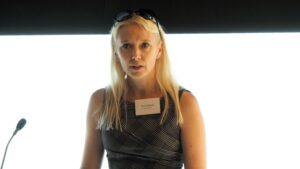
![]()
![]()

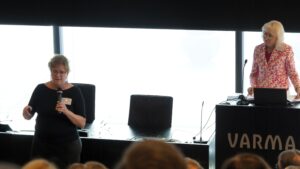
Diversity on boards
Anderson discussed diversity in Europe with Linnainmaa and summarized some points of the new EU directive.
The directive aims to ensure a more balanced representation of women and men.
Implementation will occur in member states by December 28, 2024; objectives should occur by June 30, 2026.
There should be either 40 percent of female non-executive directors or 33 percent of female executive and non-executive directors on boards of listed companies.

![]()

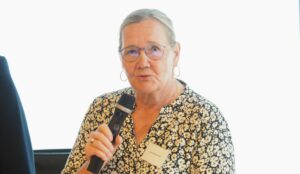
![]()

Situation in EU countries – and learnings
The best countries in gender equality regarding listed company boards are Italy, France, and the Netherlands. In Sweden, currently all companies have at least 25 percent women on boards (except small-caps).
Partnering is critical to engaging in dialogue and removing barriers.
The directive highlights the need for transparent selection procedures and precise board profiles. Executive recruiters need to be more engaged to diversify their candidate lists actively. It should be clear that there are also competent women ready to take positions.
The legislation does include penalties for not fulfilling the directive’s requirements.
Panel discussion: Key takeaways
- Diversity is much more than a gender issue.
- A diverse board requires more (time) from the chair. The chair position is super critical to whether diversity is promoted.
- In the US, HR is firmly pushed to the board room to see the current topics from people’s perspectives. Also, having term limits is an excellent way to bring fresh people in.
- It takes time to build a team. And yes, you can have a young person in a team and work as a diverse team! It requires, however, a lot from the chair to lead a diverse team – this needs to be discussed more: ”How to lead a diverse team”.
- To have ”an independent mindset” is essential: do you have what it takes to have your opinion when everyone else has different opinions?
- The language question is something to consider: are smaller companies ready for English – you have to handle all the complexity in English. In many cases, the quality of the discussion has dropped when changing from Finnish to English.
- Recruiters should dig deeper and below the levels of CEO level. You can find beautiful talents, but you must search differently. That way, you do see women.
- The owner’s role is to immediately bring the next generation to the board and allow rising starts.
- What should boards be looking for? Digitalization, sustainability and cyber experts, HR, employee and customer engagement and branding experts, (human) leadership knowledge, and remuneration expertise. However, everyone on board needs to understand the business aspect as well.


![]()




